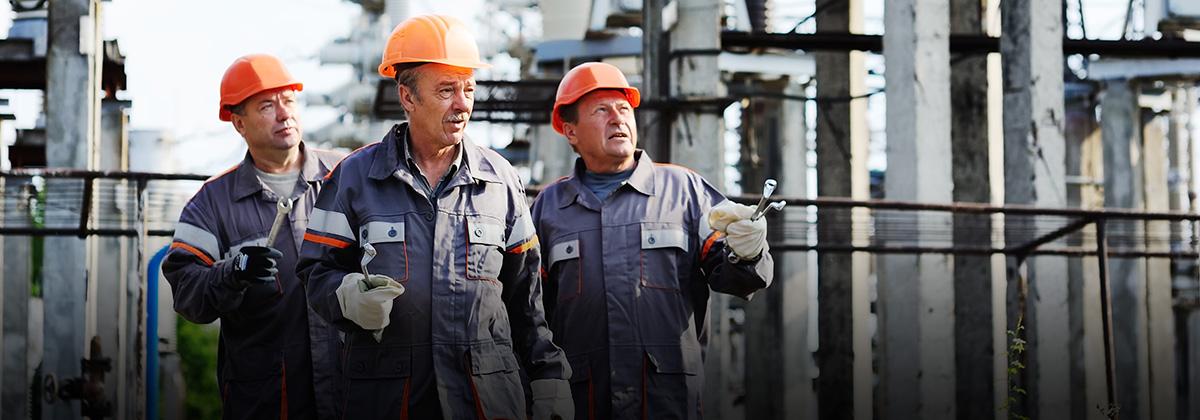The creation of first new nuclear power station in the UK in more than 20 years – the Hinkley Point C project led by French energy giant EDF – illustrates the vital importance of the utilities sector. Nuclear power is sometimes a contentious topic but its role as part of the UK’s energy mix could be hugely important for reducing carbon emissions and addressing the need to urgently modernise parts of our energy infrastructure. As the widely cited statistics from the Institution of Mechanical Engineers report, the combination of growing electricity demand and the UK’s ageing power station infrastructure could lead to a 55% “electricity supply gap” by 2025.
Nuclear power is sometimes a contentious topic. But its role as part of the UK’s energy mix could be hugely important for reducing carbon emissions and addressing the need to urgently modernise parts of our energy infrastructure. The Institution of Mechanical Engineers is one organisation warning that the combination of growing electricity demand and the UK’s ageing power station infrastructure could lead to a 40-55% “electricity supply gap” by 2025.[3]
This makes buildings maintenance within the energy and utlities sector both critical and challenging, as Chris Cruise, Industry Sector Manager at RS, explains: “If you’re the CEO of a power company you, clearly, need to ensure there is minimal disruption to supply from building maintenance. Utilities firms commonly have it written into their contracts that they will provide continuous service, with heavy fines if that is broken.
“You’re dealing with a huge variety of built estate, everything from remote pumping stations through to big brick buildings with loads of lighting and heating issues, external floodlighting, outdoor signage and so on. Or it can even be a head office in London or Birmingham or wherever. So, it is the full range.”
Remote locations cause logistical issues
Remote pumping stations will often be unmanned, creating issues around logistics and health and safety. “Even an urgent maintenance demand can end up going to a central location before then being redistributed out to the engineer, who then has to drive out to the site and deal with the issue,” says Cruise.
First, while item cost is, of course, important, it’s equally valuable in the long run to be considering totex, or total expenditure; in other words, thinking about the whole-life cost of an asset – the maintenance cost over its lifetime – rather than simply its initial procurement outlay.
Soft costs mount up
Second, you need to consider soft or indirect procurement costs – the time and paperwork associated with constantly chasing around multiple suppliers for the lowest price – as well as the hard (or actual) cost of each item, he advises.
“With an order value of £100 you need to recognise there can be a hidden cost to that in terms of your own time. If you’re procuring 100 or 1,000 orders each worth £100, and having to check, process and pay for each order, that can really add up. For every £100 you directly spend, the indirect cost can be as much as £300,” says Cruise.
"Establishing and maintaining procurement control can be a challenge so it’s important to have systems in place that make it easy and effective"Chris Cruise, Industry Sector Manager, RS
“You could deploy that person, or your own time, to something more productive than just processing invoices. Engineers quite often are at liberty to buy what they want, so are making the situation even worse because they are buying from so many different suppliers, which means there is no procurement control. Are they buying the right thing, are they leveraging brands or products across the estate? Probably not,” he adds.
“It’s very important that there is a joined-up approach for MRO procurement for buildings,” agrees Helen Alder, Head of Knowledge at CIPS.
“Maverick spending on items like light bulbs or new washers may seem innocuous on an individual level, but if it is widespread across your business it’s likely that you won’t be able to keep track of all that spend, you may be paying too much for parts and there’s also the risk that non-branded, inferior parts may be purchased that will have a short lifespan,” she advises.
Strategic procurement
But what does strategic MRO procurement actually mean in practical terms?
Third, it is important to be looking at how you use your space, especially the space and working capital being used up sitting on huge quantities of spares “just in case”. As Cruise points out: “Many companies hold huge amounts of parts internally that they distribute themselves. But, in reality, a large supplier such as RS can get these parts out more quickly, direct to the site, when unplanned events happen and the organisation saves money on storing parts they are not using.”
Another option here is “consignment” stock, where the stock is still physically located on site but still owned by the supplier, so freeing working capital to be invested elsewhere.
Finally, greater use of e-commerce procurement platforms, including “punchout” and integrated e-catalogues, can create a more efficient, seamless digital procurement landscape.
As Cruise says: “Because of the breadth of products we have across buildings maintenance, that allows you to use just the one company. You can consolidate all those multiple orders and you can potentially leverage volumes; you can also get a much clearer perspective on ensuring you have clear data around what you have purchased.
“You can’t plan your procurement strategy if you do not know what you are buying,” he adds.
For more information on some of the solutions RS can help support your business, please visit
here.





